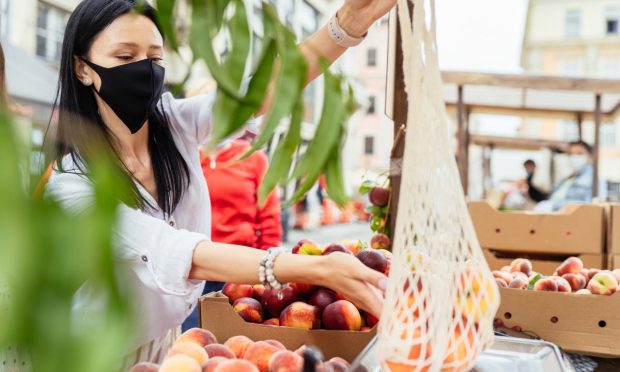Open-Air and Touchless Shopping Drive Innovation Amid Rekindled Demand Surge

Here’s a concept: shopping without the act of actually shopping is perhaps the new future of retail.
Traditional consumer foot traffic is still keeping the retail industry alive and well; it’s just happening in different ways than before.
As the retail industry evolves and adapts amidst a resurgent pandemic that refuses to go away, struggling malls are looking to remain relevant and reinvent themselves in new ways.
On the flip side, as consumers increasingly look to physically shop, yet technically not enter a store but rather hover near its perimeter to complete a transaction and leave with goods or services acquired, this consumer decision creates an opportunity for innovation.
For example, do you perhaps feel like ordering food on Uber Eats tonight for dinner? If you do, the time may soon come when you don’t need to tip the driver or even thank them for delivering your meal. This is because there may not be a driver one day. Uber announced earlier this month a partnership with Motional to debut a driver-free food delivery pilot next year in the U.S.
News like this is critical to think about because it perhaps represents a new direction for retail: one where less is more. Nonetheless, most grocery shopping still happens from inside the store. In the meantime, 56% of consumers now place orders online via restaurant sites or apps, and 41% do so via platforms like Grubhub, Uber Eats and DoorDash. The pendulum is swinging even if the physical experience of finding a grocery cart without a squeaky wheel is still routine for most consumers.
Read more: What Consumers Expect From Their Grocery Shopping
Open-Air Breathes Life into Retail’s Status Quo
Consider, for example, open-air retail stores. According to CBRE Group in data reported by The Wall Street Journal, open-air shopping centers saw a 49 percent activity spike last quarter, compared to 2019.
They continue to do well amid the pandemic because of their safety, convenience, and accessibility. Here, consumers’ typical pain points or redundant interactions (like in the case of grocery shopping, bagging groceries, taking out your wallet to make a payment, or putting your cart away before getting in your car) are eliminated (or at least invisible to the consumer).
Amazon — perhaps not surprisingly — is one company that was far ahead of this “open-air” curve before it became a pandemic necessity. Remember when Amazon and Whole Foods first announced back in 2018, for instance, the ability for a consumer to use the Amazon Prime Now app to let Amazon/Whole Foods know they were on their way to pick up their groceries? This way, they’d be ready upon customers’ arrival.
This trend continues, and partly because the traditional, old way of shopping — malls — doesn’t quite cut it anymore for digitally-savvy consumers.
Taking Advantage of a New Kind of Foot Traffic
Going back to the Amazon/Whole Foods example, grocery stores are perhaps becoming the heart of shopping centers —perhaps because during the pandemic, buying food remained an essential purchase for all.
They’re also perhaps becoming all the rage. When you think of a pop star promoting something, a grocery store may not be top of mind. Yet, earlier this month, grocery delivery firm Gopuff announced singer, actor, and entrepreneur Selena Gomez as an investor and strategic partner. Gopuff delivers convenience store items within a 15- to 40-minute window. Gomez says her interest in the brand was from her own experience using it and realizing how convenient and quick the food delivery process was.
From foot traffic to ordering food on an app (finger traffic?), the bottom line is that nearly one in three U.S. consumers now use digitally-enabled channels (like Gomez’s home delivery experience) to get groceries. Over 3 in 4 consumers said ease and convenience — echoing Gomez’s sentiments — is their No. 1 reason to buy groceries with the tap of a finger.
Urgent Considerations
As the fast-spreading omicron variant picks up speed, and restaurants around the U.S. and the world are in danger of closing, this trend of getting food delivered to wherever you happen to be, versus going out to where the food is, may only grow stronger.
Shopping without the act of shopping may indeed be the new future of retail and those who recognize this today are poised to be well-positioned for consumer loyalty and success tomorrow. Consumers are hungry for food, but they’re also hungry for innovation.
